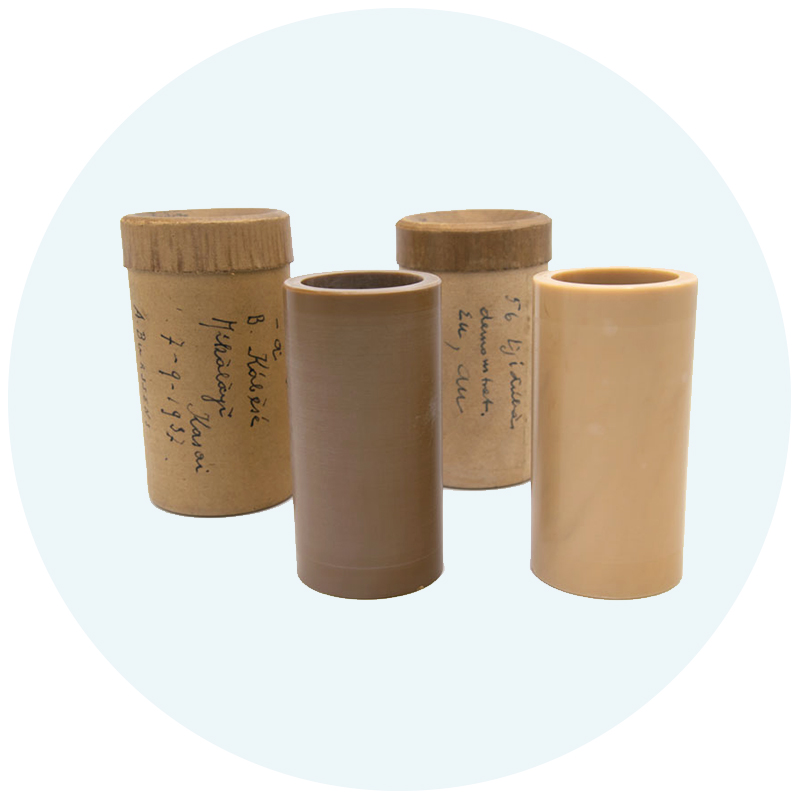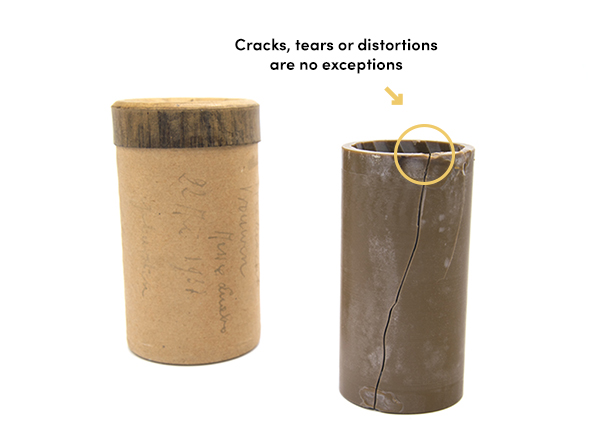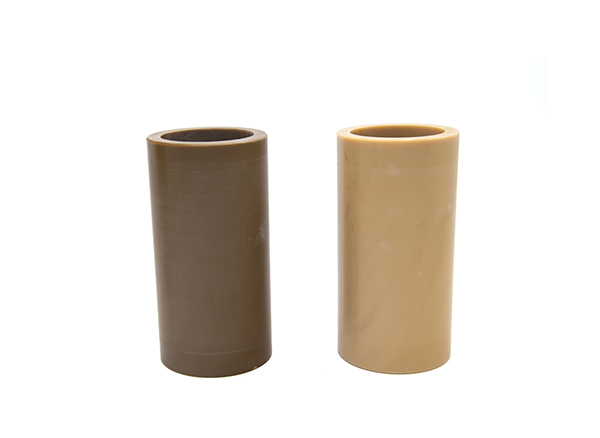Needles and grooves
The phonographic cylinder operates according to the same principle as the gramophone record: you mount the cylinder on the playback equipment, allowing the needle to move in the grooves. Miniscule height differences are then converted into sound.
Wax cylinders
Some of the phonographic cylinders consist of wax (hence the name ‘wax cylinder’’) others consist of celluloid. Their vulnerability is their greatest weakness. Cracks, tears or distortions are no exception when it comes to wax cylinders. Do not worry: damages do not mean the content is lost. Specialised labs may be able to read and digitise the content.
Did you know …
… you should always pick up a wax cylinder by putting two fingers through it. Do not do this too long: body warmth makes it break more quickly.
Read more about phonographic cylinders and wax cylinders on:
- Wikipedia – Phonographic cylinder
- Museum of Obsolete Media – Brown wax cylinder
- Museum of Obsolete Media – Dictaphone cylinder
- Museum of Obsolete Media – Ediphone
- Museum of Obsolete Media – Pathé cylinder
- Museum of Obsolete Media – Sterling record
- Museum of Obsolete Media – Gold moulded record
- Museum of Obsolete Media – Amberol records






